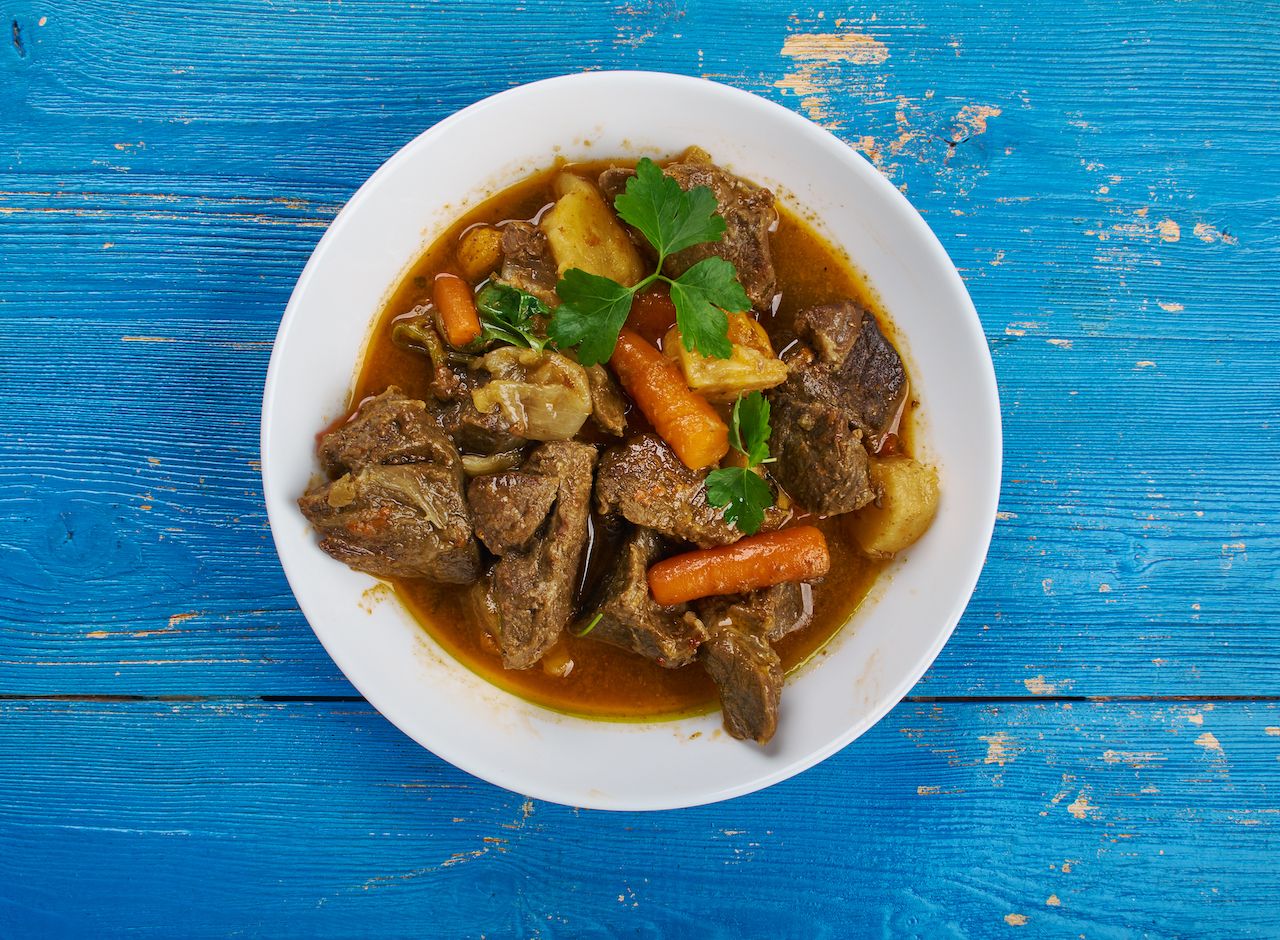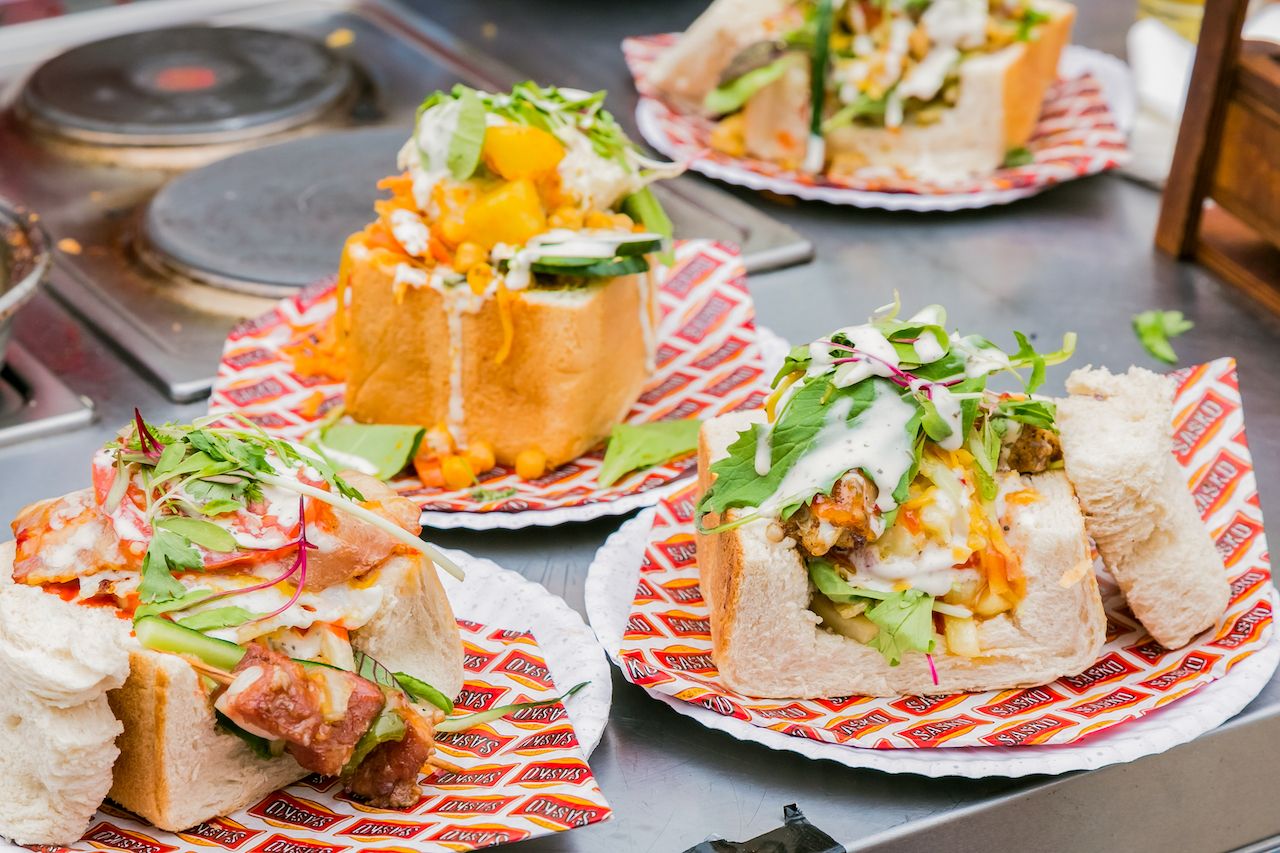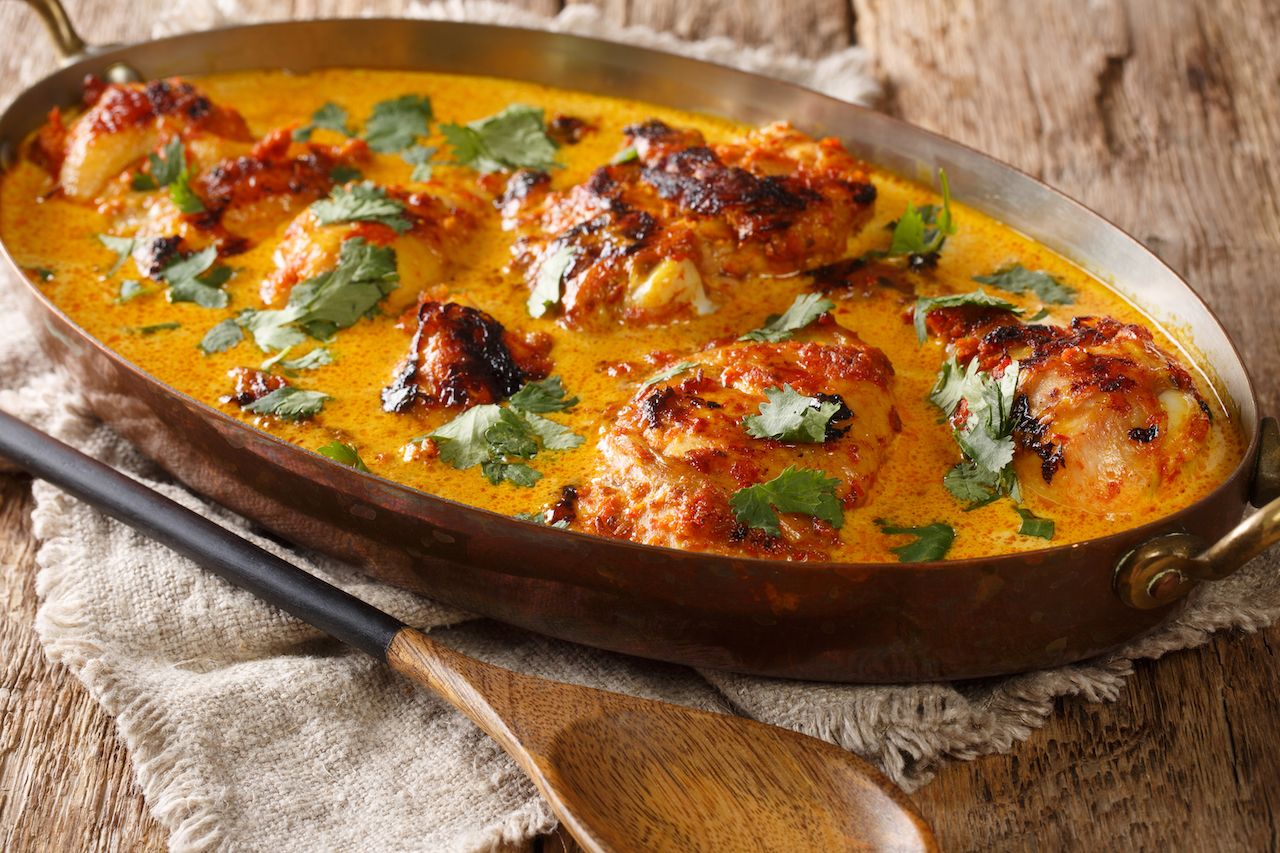These connections are perhaps what makes the story of African curries so compelling. European colonialism introduced new ethnic groups to the continent (who were often laborers or enslaved people) who brought with them family recipes, memories of the flavors from home, and even seeds tucked into the pockets of their clothes.
In her book, Curry: A Global History, food historian Colleen Sen writes, “An important event in the history of curry is the abolition of the slave trade in the British Empire … To replace the freed slaves, the British brought in more than a million indentured laborers from the Indian subcontinent to work on plantations in the West Indies, South Africa, Malaysia, Mauritius, Sri Lanka, and Fiji.”
South Africa wasn’t the only country to gain Indian communities in the wake of British colonial industry. Sen writes that from 1896 to 1901, around 300,000 laborers arrived in Uganda and Kenya from India to work on a railroad connecting the two countries. Many stayed and started families, and though they were eventually pushed out during various regime changes, some eventually returned to open restaurants and grocery stores.
However, people in Africa might have been eating curry-like dishes long far before Indian migrants ever set foot on the continent. According to Sen, Arab traders and travelers passing through East Africa in the 14th century witnessed locals eating a dish of either chicken, fish, or vegetables served over rice and bananas cooked in milk, accompanied by pickled lemons and chilies.
No matter the exact origin of curry in Africa, there’s no doubt that this dish has an intricate history on the continent — and it’s as delicious as the stories behind it are complex. These are eight curries from Africa to know.
1. Cape Malay curry

Photo: Fanfo/Shutterstock
You can’t begin to understand African curry without first mentioning South Africa. Kerries, as they are sometimes known, come in two distinct styles, the first of which is Cape Malay curry (more on the second later). Its origins can be traced back to the Dutch East India Company. In the 1600s, the company set up an outpost on the Cape of Good Hope. It brought in enslaved people from Indonesia, Madagascar, and India, who collectively formed what is now known as the Cape Malay ethnic group.
Cape Malay curries — which include dishes like bedie, a tomato-based stew-like dish with mutton, breyani (how biryani is spelled in the region), and bobotie (made with spiced minced meat) — almost always incorporate turmeric, cumin, coriander, and masala curry powder. Cloves, cardamom, and cinnamon are sometimes added as well. Dried fruit like raisins and apricots are common garnishes, and roti is the most popular accompaniment. In a nod to the Cape Malay peoples’ Indonesian roots, these curries are sometimes served with sambals (Indonesian chili paste).
2. Cari poisson
This dish is a prime example of the way different cultures fuse in African curry. Cari poisson (fish curry) has a French name and Indian roots. A beloved recipe among home cooks in Mauritius, this coconut curry is seasoned with standard spices you’ll find in many other African curries, including coriander, cumin, and turmeric. Some versions are spiced with chilies and tamarind paste; others are served with eggplant. Indo-Mauritians are one of the largest ethnic groups in Mauritius. They’re the descendants of indentured laborers brought to the island by British colonists to work in sugarcane fields. France took control of Mauritius in 1715 and ruled until the country ceded control of the island to the British in 1814. The island achieved independence in 1968.
3. Durban curry

Photo: Sunshine Seeds/Shutterstock
The origins of Durban curry can be traced all the way back to the indentured servants who were brought to South Africa by the British to work on sugar plantations. In an essay for Vice, Ishay Govender, a curry historian and the author of Curry: Stories & Recipes across South Africa, writes, “This curry tells of adaptation to the terrain and available ingredients.”
Indian laborers in this land that was new to them found themselves enduring “living in conditions akin to slavery,” but they nevertheless “clung onto their religions and their food culture,” stashing seeds from home in their pockets and creating a rice substitute from maize. The first shops set up for Indian laborers to sell vegetables and spices from home appeared in 1861, perhaps the predecessors to the restaurants that began serving a Durban curry dish called bunny chow in the 1930s.
As Govendar points out, so many restaurants claim credit for creating bunny chow that its true origins are shrouded in mystery. What is known, Govendar writes, is that “South Africa’s oppressive racial segregation laws under apartheid strictly prohibited the mixing of races in public spaces and the sale of food to blacks by Indians and others.” These restaurants surreptitiously sold their curries from a to-go window in a hollowed-out loaf of bread to make it easy to transport. Other theories speculate that restaurants simply replicated a home meal they saw Indian laborers, who needed a convenient way to take lunch to work, make. The name “bunny chow” might refer to the masterminds behind the dish — bania is the term for the Indian merchant caste.
Today, Durban, South Africa, is home to 800,000 Indian people, and Durban curry and bunny chow remain iconic and beloved dishes throughout the country. The dish, which usually incorporates chunks of fish, potatoes, or lamb, is characterized by its searingly spicy flavor, oily texture, and deep rich red color.
4. Curried potatoes
Before the dictator Idi Amin expelled all people of Asian descent from Uganda in 1972, there were about 80,000 people of Indian or Pakistani descent living in the country. Their presence might be behind the inspiration for this dish, which incorporates typical curry spices like coriander, turmeric, and cinnamon. The potatoes get a spike of heat from chili peppers and are served in a thick tomato-based sauce and topped with cilantro.
5. Kuku paka

Photo: AS Food studio/Shutterstock
This dish is ubiquitous in Mombasa, a coastal city in southeast Kenya. It’s made with chicken simmered in a rich coconut-milk-based sauce. Seasoned with cumin, coriander, turmeric, and garlic, this curry gets a zing of freshness from lemon or lime juice. Sometimes also known as kuku na nazi, the dish is also popular in Uganda and Tanzania, where there are large communities of Indian migrants. For instance, Gujarati traders once controlled most of the commerce in Zanzibar, an autonomous region within Tanzania.
6. Mtuzi wa Samaki
Tanzania’s history of Indian immigration appears again in this coconut fish curry, which actually originated in Zanzibar. Sometimes called a “crossroads of trade,” merchants from the Indian state of Gujarat once controlled the region and still have a strong presence there. To prepare mtuzi wa samaki, fish fillets are cooked in a coconut milk-based broth, seasoned with garam masala, garlic, and tamarind paste. Sen writes that in Zanzibar, curries are often accompanied by bananas, rice, pickles, and chapati (an East African bread).
Tajines, which are named for the ceramic dish in which they are cooked, are arguably closer to a stew than a curry, but they have a place on this list. A curry is defined as a “dish of vegetables, onions, meat or fish” that’s cooked in a sauce; seasoned with spices like turmeric, cumin, coriander, ginger, and fresh or dried chilies; and eaten with rice. Going by that definition alone, this Morrocan dish shares many similarities with other African curries: It’s seasoned with garlic, cumin, coriander, ginger, and turmeric. Chicken, lamb, and beef are all common in both tajine and curry dishes, and vegetables, usually carrots or tomatoes, are cooked in a broth until thickened and coating the rest of the ingredients. One big difference is that tajine is not served over rice or couscous, whereas curry is usually always served with rice. Tajine might not be a traditional curry, but it shares some distinct characteristics with Indian-inspired dishes.
8. Caril de caranguejo
This crab curry from Mozambique is a marriage of Arab, Portuguese, and Indian flavors and cuisines. Arab traders introduced Mozambique to ingredients like garlic and onions. Centuries later, in 1502, the Portuguese colonized Mozambique, exerting a strong influence over the country’s cuisine: Not only did the Portuguese introduce citrus fruit, tomatoes, and chilis to Mozambique, but they also popularized a lunchtime meal called almoco, during which carils — or curries — are an especially popular dish. Carils like this one often incorporate seafood and are served with mango achar (pickled mangoes). According to Sen, fish and shellfish curries are often also seasoned with peri peri, the iconic pepper sauce created by Portuguese colonialists who popularized it in Mozambique, Angola, and South Africa especially.








